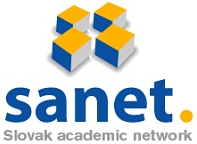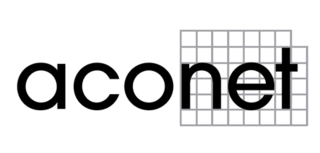
Janet is a high-speed network for the UK research and education community provided by Jisc, a not-for-profit company set up to provide computing support for education. It serves 18 million users and is the busiest National Research and Education Network in Europe by volume of data carried. Previously, Janet was a private, UK-government funded organisation, which provided the JANET computer network and related collaborative services to UK research and education.
CARNET is the national research and education network of Croatia. It is funded from the government budget and it operates from offices in Zagreb and five other cities.
Estonian Education and Research Network (EENet) is a structural unit of the Information Technology Foundation for Education (HITSA) whose main goal is to ensure the development and stable functioning of the information technology infrastructure necessary for research, education and culture.

The Greek Research and Technology Network or GRNET is the national research and education network of Greece. GRNET S.A. provides internet connectivity, e-infrastructure, and other services to the Greek Educational, Academic, and Research community. Additionally, GRNET makes digital applications. It also provides services to the following sectors: Education, Research, Health, Culture. GRNET supports all Universities, Technological Education Institutes, Research Centers, and over 9,500 schools.

TeraGrid was an e-Science grid computing infrastructure combining resources at eleven partner sites. The project started in 2001 and operated from 2004 through 2011.
A national research and education network (NREN) is a specialised internet service provider dedicated to supporting the needs of the research and education communities within a country.

The Trans-European Research and Education Networking Association was a not-for-profit association of European national research and education networks (NRENs) incorporated in Amsterdam, The Netherlands. The association was originally formed on 13 June 1986 as Réseaux Associés pour la Recherche Européenne (RARE) and changed its name to TERENA in October 1994. In October 2015, it again changed its name to GÉANT and at the same time acquired the shares of GEANT Limited.

The Energy Sciences Network (ESnet) is a high-speed computer network serving United States Department of Energy (DOE) scientists and their collaborators worldwide. It is managed by staff at the Lawrence Berkeley National Laboratory.

SURF is an organization that develops, implements and maintains the national research and education network (NREN) of the Netherlands. It operates the national research network formally called SURFnet.

eduroam is an international Wi-Fi internet access roaming service for users in research, higher education and further education. It provides researchers, teachers, and students network access when visiting an institution other than their own. Users are authenticated with credentials from their home institution, regardless of the location of the eduroam access point. Authorization to access the Internet and other resources are handled by the visited institution. Users do not have to pay to use eduroam.
Delivery of Advanced Network Technology to Europe (DANTE) is a not-for-profit company that plans, builds and operates the consecutive generations of the backbone network that interconnects the national research and education networks (NRENs) in Europe. The organisation is based in Cambridge, United Kingdom and was formed in 1993 as a limited liability company owned by Réseaux Associés pour la Recherche Européenne (RARE). Ownership was transferred to a number of NRENs and government agencies in 1994.

The University Computing Centre in Zagreb has a long tradition in the area of information and communication technologies. It was founded in 1971 within the University of Zagreb, the only Croatian university at the time, with the purpose to enhance the implementation of information technologies in the academic community as well as in Croatia in general.
The Academic Scientific Research Computer Network of Armenia (ASNET-AM) is the national research and education network (NREN) of Armenia. ASNET-AM was created in 1994. The structure and policy of ASNET-AM operation was developed and realized by the Institute for Informatics and Automation Problems of the National Academy of Sciences of Armenia.

Cornelis Adrianus Maria "Kees" Neggers is a Dutch Internet pioneer. He is best known for starting and promoting many initiatives for international collaboration in research and education networking.
GARR is the Italian national computer network for universities and research. The main objective of GARR is to design and manage a very high-performance network infrastructure that delivers advanced services to the Italian academic and scientific community. The GARR network is connected to other national research and education networks in Europe and the world, is an integral part of the global Internet, and thereby promotes the exchange and collaboration between researchers, teachers, and students worldwide.

The Research and Educational Networking Association of Moldova (RENAM) is the national research and education networking organisation (NREN) of Moldova. RENAM was incorporated in June 1999 as an association under Moldovan law. It is a member of TERENA.

SANET is the national research and education networking organisation of Slovakia. The SANET association is a non-profit organisation whose members contribute to the operations of the network. It is a member of TERENA.

AMRES is the National Research and Education Networking organisation (NREN) in Serbia. After it was founded on 22 April 2010 as an institution by the Serbian government, AMRES took over the responsibility for the academic network and the associated services from the Computer Centre of the University of Belgrade. AMRES represents Serbia in international forums such as TERENA, but the University of Belgrade is still the organisation representing Serbia in the project that provides the funding for the European backbone network GÉANT.

ACOnet is the name of the national research and education network in Austria. The ACONET association promotes the development and use of that network. ACOnet is not managed and operated by ACONET, but by a unit in the Computing Centre of the University of Vienna that also operates the Vienna Internet Exchange. The University of Vienna represents ACOnet internationally, for example as a member of TERENA and as a participant in the project that funds the European backbone network GÉANT.
eduGAIN is an international interfederation service interconnecting research and education identity federations. It enables the secure exchange of information related to identity, authentication and authorization between participating federations. The service is managed by a team led by TERENA. eduGAIN® is a registered trademark of DANTE.













